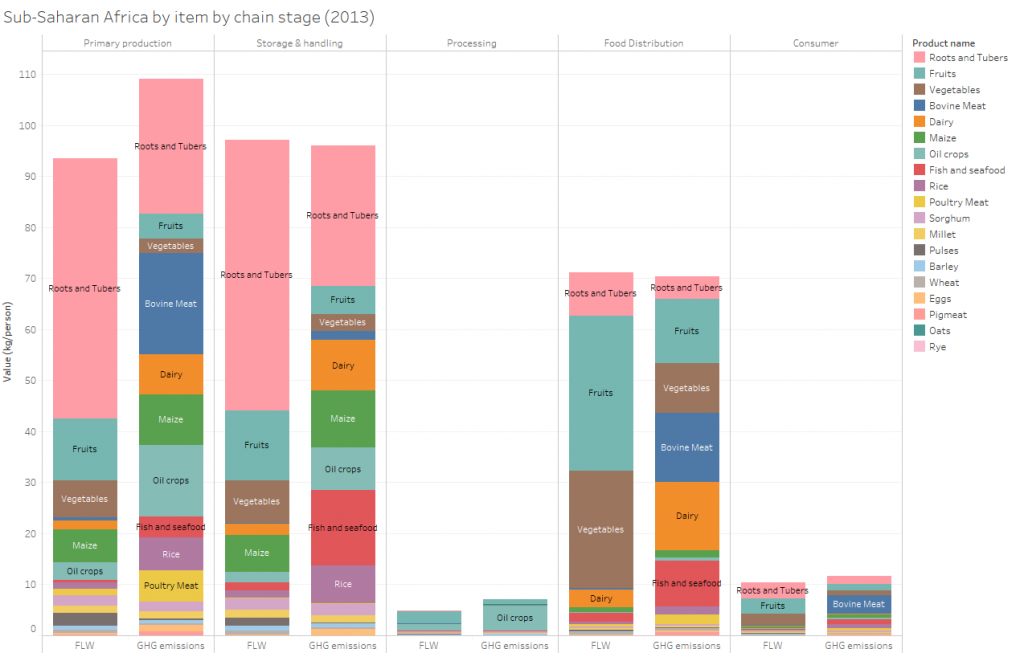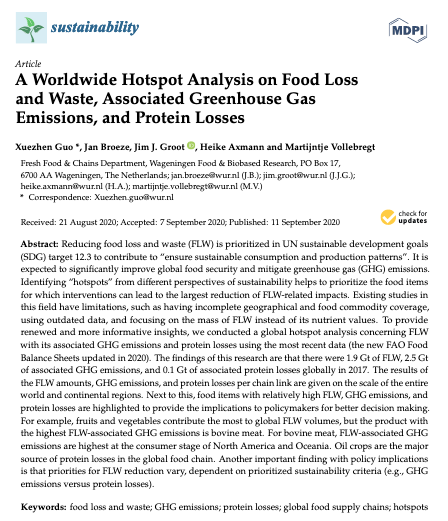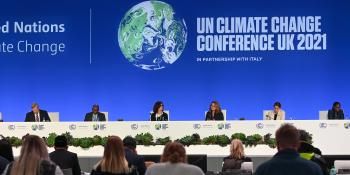How can food loss and waste reduction best deliver climate benefits?

Our food systems are failing us, and a new report from the Transforming Food Systems Under a Changing Climate initiative (launching June 25th) argues that nothing short of a systemic transformation of food systems is required if we are to feed the world’s current and future population sustainably under climate change. Reducing post-harvest food loss and waste (FLW) is one of eleven essential actions this report identifies to achieve the United Nations’ Sustainable Development Goals (SDGs) focused on food security and the environment.
Join the discussion on “Reducing food loss and waste,” part of the A New Era for Food and Climate virtual event on 25 June. |
|---|
Reducing FLW also can significantly reduce greenhouse gas (GHG) emissions and other environmental impacts. Agriculture, forestry and other land uses emit around 12 Gt CO2-eq per year. Globally reducing FLW by half—from about 30 to 15%—of all food produced (in line with the SDGs, UN 2015) is expected to reduce GHG emissions by 0.7 to 2 Gt CO2-eq. The flagship report highlights actions for reducing FLW at large scales. Here we share recent research results and introduce a GHG calculator tool for FLW to help achieve large-scale impacts.
1) Set priorities
To achieve global mitigation goals, action should focus on the highest emitting products and locations. The report helps identify these priority actions by showing how the climate impacts of FLW vary according to the type of food and how or where it is produced (Figure 1). Bovine meat, dairy, and rice emit the most GHGs.
Smallholder farmers in developing countries still face high post-harvest losses. Apart from Nigeria, African countries still have a relatively low climate footprint compared to countries in industrialized Asia, Europe and the US.
Reducing FLW is a priority for climate change adaptation and food security. In Africa, approximately 1 in every 5 people is undernourished, and climate change is a present and growing threat to food security and nutrition (FAO and ECA 2018). Therefore, reducing FLW needs to be a higher priority if we are to achieve food security across Africa today and as countries, smallholders, and related institutions adapt to climate change today and in the future.

Figure 1. The overview of FLW and associated GHG emissions for Sub-Saharan Africa per person (Guo et al. 2020)
Our hotspot analysis shows in which stage of the supply chain major losses and emissions occur and identifies the most critical crops involved (Figure 1). Based on the hotspot analyses, policymakers, civil society, and the private sector can prioritize key opportunities for FLW and GHG emissions reduction and define intervention strategies to reduce FLW and the associated GHGs. Next to that, the hotspot analysis shows what happens as dietary patterns change. Africa for instance has a growing middle class moving into the big cities. We know from other places that shifting diets go hand in hand with this kind of migration. Usually, this growing middle consumes more milk and bovine meat. The amount of FLW that currently occurs for those food categories means that increased consumption would dramatically aggravate the total amount of FLW and induce huge increases in GHG emissions. Therefore, interventions in these supply chains are essential to lower the associated FLW and minimize associated GHG emissions.
2) Avoid unwanted trade-offs that can result from reducing FLW by using the Agro-Chain Greenhouse Gas Emissions Calculator to identify optimal interventions
Only by analyzing cumulative GHG emission impacts along the value chain, and comparing emissions before and after an intervention, can we reasonably estimate net effects and avoid promoting interventions that have unintended consequences for GHG emissions. For example, many FLW interventions require additional use of energy or fuel for cooling, packaging material, or air freight in place of shipping. Understanding which interventions contribute to food security and also reduce total GHG emissions is essential for climate-smart food policy and practical adoption of sustainable solutions.
Wageningen University and Research's recently developed Agro-Chain Greenhouse Gas Emissions Calculator (ACE calculator, formerly ACGE) provides decision support and guides industries and policymakers to identify optimum interventions considering the expected net effect on both FLW and GHG emissions. Different from some other emerging datasets and calculators, the ACE calculator allows users to examine different operations in the post-harvest chain and associated FLW, making it particularly suitable for intervention analysis.
3) Concrete action
Combating FLW will require a broad range of interventions along the supply chain, varying from product quality interventions, re-orientation and new connections to food market demand. The World Resources Institute (WRI) proposed 10 “scaling interventions” intended to mobilize all parties along supply chains, as well as to identify and stimulate actions for FLW hotspots and create enabling conditions for FLW reduction. To effect change interventions must be defined based on a complete food system perspective, including all actors’ support, suitability in the socio-economic context (including market, consumer preferences and nutritional needs), environmental drivers, and governance. For instance, some storage solutions may increase costs that require markets with sufficient purchasing power. Urbanizing areas and better quality management, or processing to shelf-stable products may result in a new market position, which required new market outlets for the processed product or competes with possibly cheaper supply.
The ACE calculator can help quantify the resulting impacts to improve understanding of trade-offs between food losses and GHG emissions. With the calculator, policymakers and the private sector can identify priorities and set targets for a more sustainable food system.
This blog is part of a series for the Transforming Food See details and register here. |
Read more:
- Tool: ACE calculator
- Website: Transforming Food Systems Under a Changing Climate
- Journal article: A Worldwide Hotspot Analysis on Food Loss and Waste, Associated Greenhouse Gas Emissions, and Protein Losses




